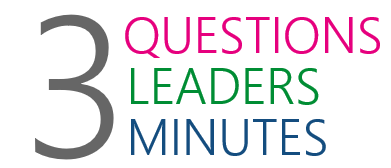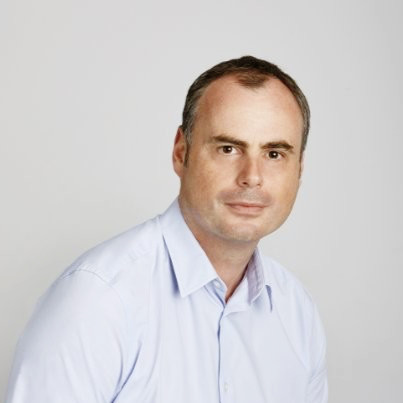
Covid-19 has meant many advertisers have had to withdraw some advertising and stop creative production video and still shoots. They’ve been forced to use existing footage, use very simple production techniques (film shot on iPhones!), or seek new methods like animation or use of CGI. Flock has asked three top creative production experts what we are learning through the experience, what will become “business as usual”, and what will disappear as the marketing world moves on from Covid-19.
We asked three questions to an expert panel below and their answers follow.
Chris Hirst Global CEO, Havas Creative Andria Vidler CEO, EMEA at Tag David Patton Global President, Creative Experience and Advertising at Technicolor (The Mill, MPC, Mikros)
1
With regards to Creative Production how have advertisers, agencies, and production companies adapted to Covid-19, and which of these adaptations will stay long after the immediate impact of Covid-19 has passed?
CH – Lockdown has acted as a catalyst for us all to become avid mobile filmmakers and consumers. The ever-decreasing distance and ever-increasing speed from production to consumption isn’t a new phenomenon, it’s just on steroids right now. It’s not like the technology wasn’t there for us to react fast before, but this behaviour revolution is being driven by a new need. Those willing and able to adapt and reap the benefits, may never look back.
DP – I think the way the industry has quickly adapted to new ways of working has been tremendous. Work practices that were unimaginable a few weeks ago have now become part of everyday operations: remote working, isolated shoots, a shift in production medium to animation, CGI and design. All of these have unlocked exciting new ways of thinking and solving problems. I think this will have a positive long-term impact on our industry as clients look for new ways to connect with their customers and production companies navigate the new normal. I’m particularly thinking about working from home – if this is widely maintained, there is the potential to significantly change the diversity and make-up across our industry. I’m excited about the positive impact this will have on the creative work we will see over the coming months and years.
AV – Those who work in production, like all creatives, have a great way of rolling up their sleeves up and using what’s available to them. One of our sound designers at Tag recently utilised the availability of his son (who is at home with him) to capture the sound of a rustling sports jacket for a running themed ad we worked on with Virgin Money. You’ll also have seen the user generated adverts of late, which have worked well for the immediate weeks following lock down. We worked on one we felt was a ‘best in class’ example with the Princes Trust – it featured a plethora of their talent ambassadors and a particularly strong script.
But what we think will live on, rather than any specific format, is the principle behind doing more with less. Our key recommendation for clients has been to look at what they have in their archive that with a creative refresh would be relevant for audiences now. We have seen successes in this, we worked with Virgin Radio to create some new idents from a campaign they shot back in 2018, or 2019 the content of that campaign (shot in a home, with Chris Evans) felt right for today’s world. There is cost saving to be had in sweating your assets and making sure your investment in production works for you in as many ways as possible, so this we can expect to continue post-Covid.
2
Some would say that creative standards have been falling and further been hurt by Covid-19, do you agree and do you think the damage is long term?
CH – I don’t believe that this sounds some sort of death knell for creative standards and quality. It isn’t a question of either speed or quality. Choosing the right content at the right time and delivering it in the most meaningful way possible – that’s the holy grail; it doesn’t change because of a pandemic. We should, in fact, see this time as a kind of rebirth. We can be bigger, more inclusive, transformational for our clients – that doesn’t need to be, and actually never should be, at the expense of creative effectiveness. We should be obsessing about delivering creativity, in all its forms, no matter what.
DP – We haven’t seen our clients wanting to lower their creative ambitions during this period – quite the contrary. The disruption of daily lives across the world has changed audience relationships with media and brands. More time in, more time online, more time watching TV. This requires brands and agencies to reframe their customer relationships and I think clients are more open-minded than ever to explore new ways of advertising. Clearly some of this is driven by limitations around live production but also that we all have had more time to reflect, consider and experiment. Perhaps we could be about to enter advertising’s Renaissance period…
AV – I don’t put much store by the idea that creative standards have been falling. There is arguably much more pressure on creatives nowadays, they still need to come up with that big idea but that idea needs to fit so many functions. It needs to be executed, not just across one print ad, TV buy or poster, but countless platforms, and possibly not just in your market but also globally, while getting great results – it’s a lot to ask!
This is at the heart of Tag’s business model, we exist to help clients through this complexity. Covid-19 and the economic situation which will follow, will make that challenge even more prominent because it puts even further on pressure on budgets.
3
Many advertisers have enjoyed the speed, the cost-efficiency, and the ability to fit relevant copy to their media that the Covid-19 crisis has allowed. They are enjoying working fast with existing footage, stock footage, and different simple production techniques. How are you measuring the impact and effectiveness of the changes?
CH – The coronavirus outbreak has already led to a change in convention by brands and channels. Take the audience-led social initiative ‘#ClapForOurCarers’. Channel 4 engaged nearly 40 brands to create content, using mobile phones, that was broadcast less than 36 hours later. And, there are many examples of businesses and brands swiftly and effectively using their platforms and reach as a force for good. But it does feel like every ad you see on TV right now is the same, doesn’t it? Be authentic, be true to who you really are and you will have the impact you desire. It’s not complicated, but it is difficult. I guess that’s why we’re here.
DP – This has been an unpredictable and disruptive time with clients having to think quickly about how they adjust their brand messaging to the world around them. We are working with many partners who are successfully using existing or stock footage to deliver new campaigns. Producing new scripts at speed, based on stock with additional CGI or animation means they are able to adapt their messages swiftly and efficiently. The long-term impact on consumer loyalty will be based on those brands that were able to react, adapt and innovate appropriately during these strange times – and I think agencies and production companies will be remembered for how they also adapted to the changing needs of the market. We will measure the impact and effectiveness of these new ways of working through the impactful campaigns we deliver and the ongoing trust our clients have in us to solve their creative challenges.
AV – This is exactly why we built our own, bespoke iDDM platform for Heineken. We want to be measured on performance and effectiveness as well. Heineken were initially at a loss; no pubs open, the big sporting events they sponsor are cancelled and they can’t exactly claim a trip to the off-licence is essential (no matter what you feel personally!). However, close collaboration and some efficient brainstorming involving their creative agencies as well and we started getting messages of hope out there. The speed of that reaction is not a new thing for us but it has become the important thing at this juncture.
We’re constantly talking to our clients to determine how their content is being received within the context of the current situation, plus monitoring the wider landscape. We’re being forced to live very much in the ‘here and now’ but I would recommend that once brands have resolved how they are going to communicate to their audiences during the current restrictions they need to start to think ahead with regard to potential product changes alongside communication and messaging
We recently shared a White Paper (Marketing Execution During the Covid Crisis) in which we set out our emerging point of view on what our clients need to do to protect the health of their brands. Like others, our key message, is that despite the economic pressures of Covid-19 those brands who can continue to invest in advertising tend to rebound more quickly post-recession.
If you would like to know more about how Covid-19 has changed creative production please don’t hesitate to let us know and contact us here.





